| Felix Heintzenberg
was born 1971 and grew up in Lübeck in northern Germany. He started wildlife photography at the early age of 15. This was a natural evolution of his general interest in nature and all its miracles and secrets.Watching and photographing wildlife became soon a passion and Felix school teachers often assumed that he was in some photographic hide whenever he did not show up at school. |
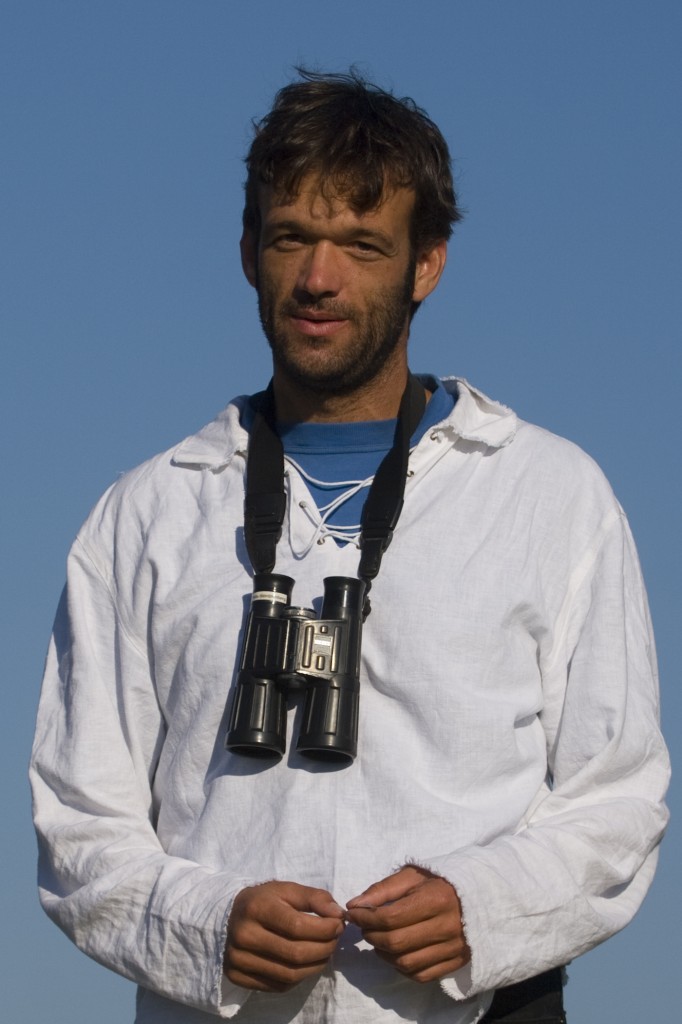 At Hamningberg/Varangerfjord in northern Norway in 2006. Photograph: Susanne H Schwieler |
||
| The early years
Being a keen birdwatcher with a great interest in bird identification, Felix focused mainly on bird photography in the early years. In order to photograph birds he travelled all over the globe from the USA to China, South Africa, New Zealand and several times to Israel, often with other bird photographers. Since the late 80’s, his photographs have predominantly been published in numerous magazines and books about birds. |
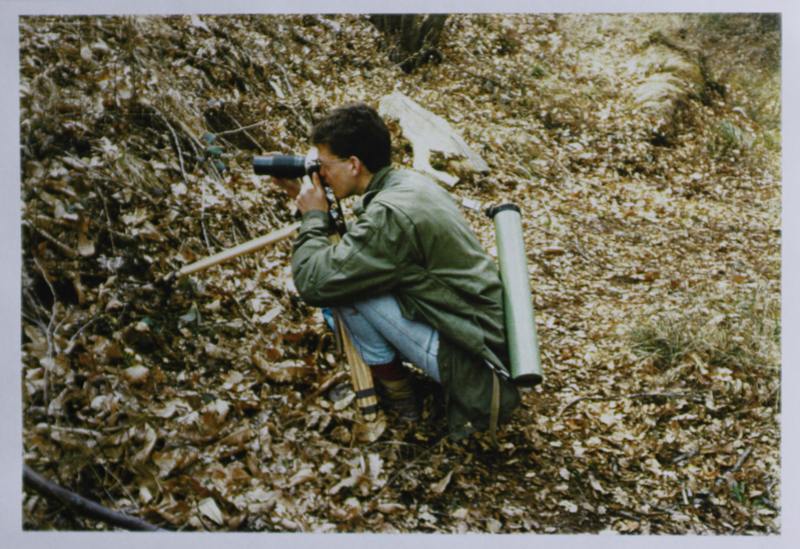 Felix Heintzenberg in the mid 80’s as a teenager, having just started to photograph wildlife. Photograph: Ulrich Heintzenberg |
||
| The 1990’s
During the early 1990’s, Felix developed his photography and started studying biology at Göttingen University. After having moved to Sweden in 1995, he continued his studies in biology and got a master’s degree in biology from Lund University. At the same time he started to specialize on photographing scandinavian wildlife like eagles, bears and other arctic species. He has visited several times the Barents Sea close to the cape north in the northernmost parts of Norway. He even started to build photographic hides and got interested in macro and landscape photography. |
 Felix has just been photographing black stilts in New Zealand. With only 85 remaining individuals worldwide, the black stilt is the rarest wading bird in the world. In order to get photographs, Felix had to become a “wader” himself by wading in ice-cold water of a mountain river in his jogging shoes. New Zealand 2004. Photograph: Axel Halley. |
||
| Recent years
In recent years, Felix has developed new skills in photography by working on different large-scale photo projects. Owls, kingfishers, eagles and drinking birds were some of the main projects he has been working with between 2000 and 2011. He published a book about european raptors and owls in 2007 and currently, there are several new books in preparation. Even today, Felix is still working with different owl projects, an attempt to combine wildlife photography and wildlife conservation. So far, he has built and installed more than 250 nest boxes for barn owls, tawny owls, pygmy owls and tengmalm’s owls. |
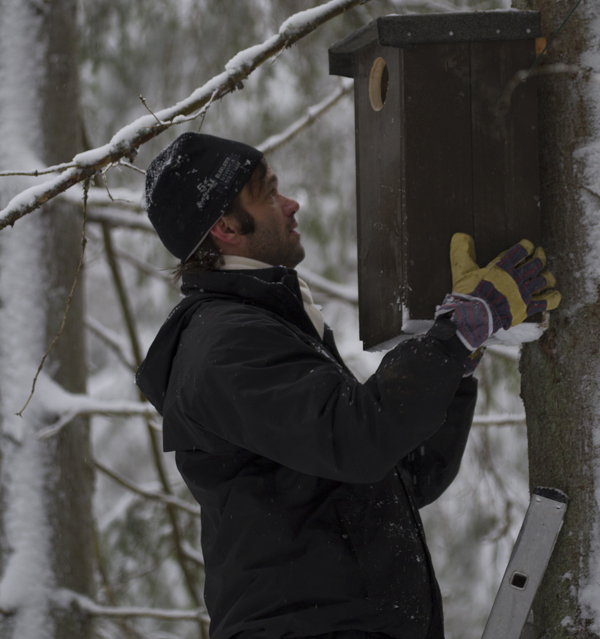 Installing nest boxes for Tengmalm’s Owls. Felix has built and installed more than 250 owl nest boxes and often combines wildlife photography with nature conservation. Photograph: Patrik Axelsson |
||
| Awards
In recent years, Felix has won several awards for his photography and writing. The most prestigious are the swedish World Wildlife Funds awards Panda Book of the Year 2014 and Panda Book of the Year 2015. This is the first time that anyone has won this prestigious award two years in a row two years in a row. Felix won the awards for his book ‘Te Nights of the North – Animal life between dusk and dawn’ (Nordiska Nätter – Djurliv mellan skymning och gryning) and the latest book ‘In the Shadow of the Trees – Life in our wild forests’ (I Skuggan av Träden – Liv i våra vilda skogar). The awards were handed out by HM The King of Sweden. |
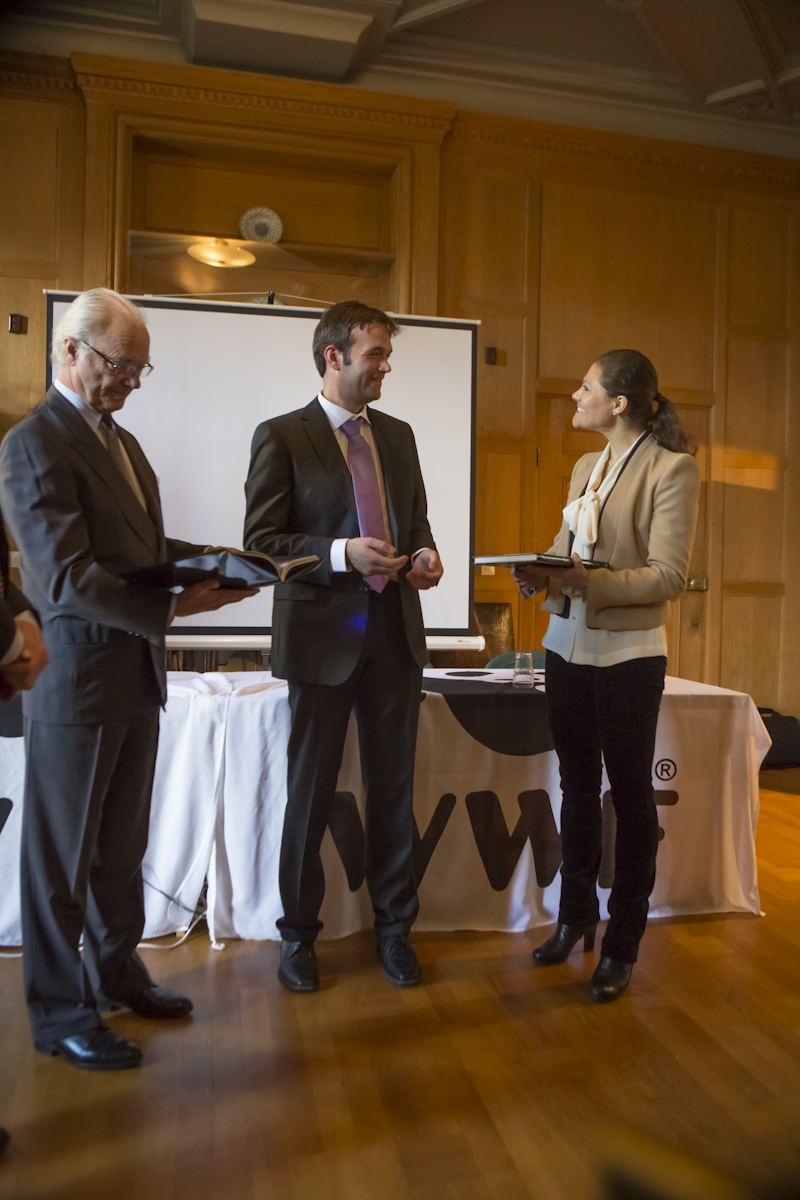 Winner of the literature award Panda Book of the year in 2013. |
||
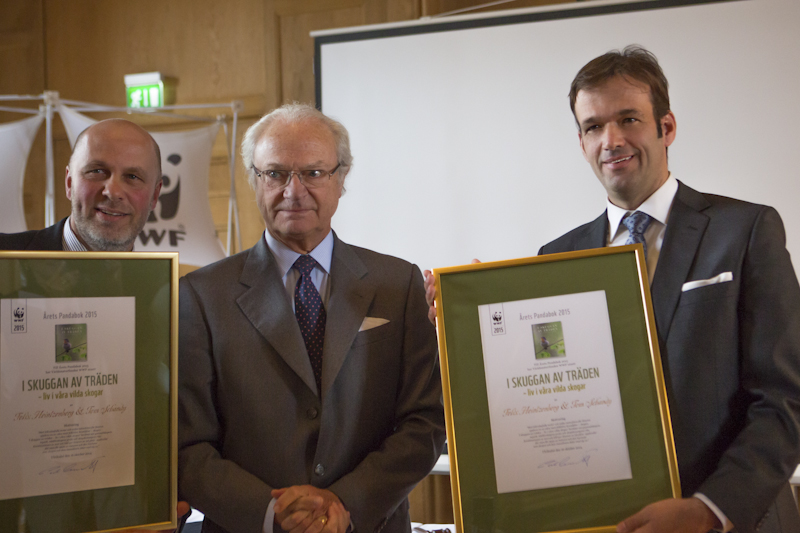 One year later, on october 2014: For the second year in a row winner of the literature award Panda Book of the Year. To the left of the photograph my co-author Tom Schandy.
|
|||
